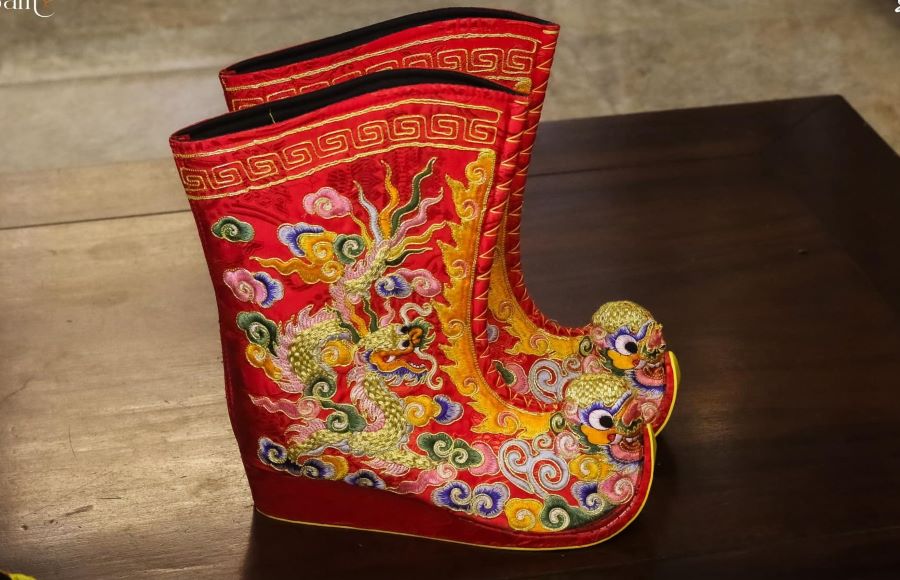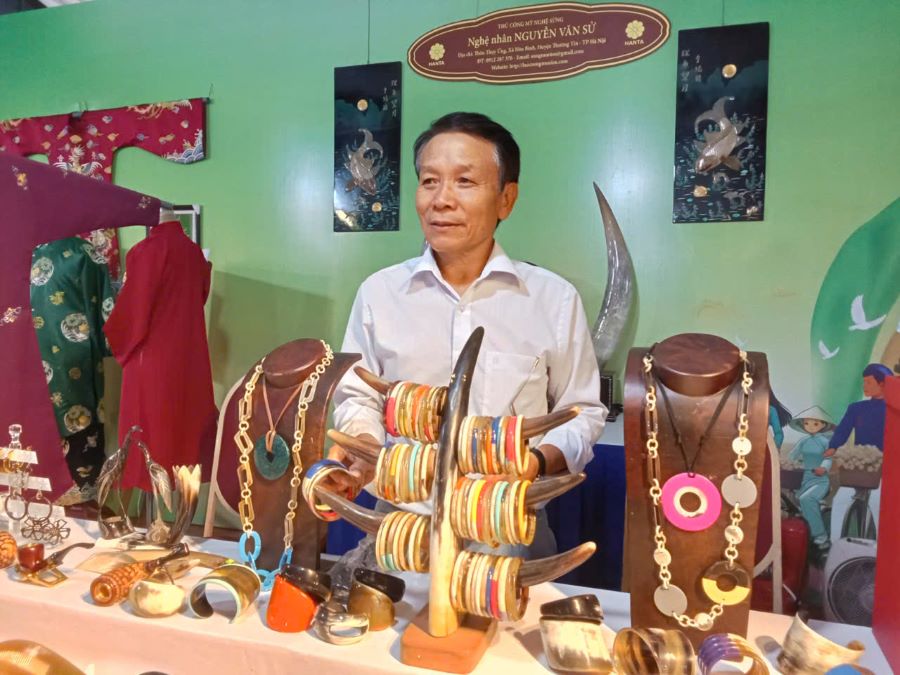The artisans of Hanoi’s folk communities are not just masters of their craft but also guardians of a rich cultural heritage, passing on traditional skills to the younger generation and spreading Vietnam’s cultural flair far and wide.
**The Vibrant Embroidery Trade of Dong Cuu Village**

The village of Dong Cuu, on the outskirts of Hanoi, has been synonymous with exquisite embroidery for centuries. Among its talented embroiderers is Nguyen Thi Thanh Hoa, a resident of Co Chat Hamlet in Thuong Tin District, Hanoi. From a young age, Hoa has been immersed in the world of embroidery, learning the intricate details of this traditional craft from her parents and grandparents. Her passion for embroidery has grown over time, leading her to create breathtakingly beautiful ao dai, Vietnam’s elegant traditional long tunic.
Co Chat Hamlet holds a special significance as the birthplace of embroidery in Hanoi, with a history spanning almost 400 years. Since then, the craft has evolved and spread throughout Vietnam. Today, embroidered products are an integral part of daily life, adding a touch of romantic charm to the country’s cultural landscape.
Hoa’s talent lies not only in her skilled hands but also in her ability to infuse her artwork with the essence of Vietnam’s spirit. She effortlessly translates chalk designs on fabric into intricate embroidery, creating vivid and captivating pieces.
Beyond her embroidery skills, Hoa is also a savvy businesswoman. She has embraced technology in production, investing in embroidery machines and establishing large workshops. Her endeavors have created job opportunities and increased income for many workers in her community. Hoa’s family workshop consistently employs four full-time workers, while others contribute to the craft from their homes.

“Embroidery has been a part of my life since I was very young,” Hoa shared. “This intergenerational passing down of knowledge has contributed to the development of embroidery in our community. Today, my family’s products are sold nationwide, helping to preserve and promote the quintessence of our craft village.”
Hoa’s family workshop offers a diverse range of embroidered clothing, including both modern and traditional ao dai, ensuring that customers have a plethora of options to choose from. Their exceptional craftsmanship is recognized through various accolades, including four-star OCOP certificates awarded by the Hanoi People’s Committee for three of their stunning creations: the round-necked ao dai embroidered with cotton roses, the ao dai featuring a pair of mandarin ducks, and the men’s ao dai adorned with motifs.
**The Art of Horn Combs in Thuy Ung Village**

Nestled in the heart of Hanoi’s Thuong Tin district is Thuy Ung village, one of four villages in Hoa Binh commune renowned for its horn comb-making craft. This ancient tradition, dating back four centuries, has been immortalized in Vietnamese folk songs and continues to thrive today thanks to artisans like Nguyen Van Su and his family.
Su’s journey began as a street vendor, traveling across Vietnam to sell horn combs. Back then, Thuy Ung’s horn products were primarily limited to simple hair combs. However, times have changed, and today, their combs boast elaborate and aesthetically pleasing patterns.
According to Su, Vietnam’s unique craft village products have gained popularity among foreigners in this era of international integration. Recognizing this demand, Su returned to his village and expanded production to cater to diverse customer tastes. In addition to hair combs, their workshop now creates a variety of other horn products.
“My family’s horn products are supplied to commercial centers and tourist attractions in Hanoi and beyond,” Su proudly shared with The Hanoi Times. “To meet the demands of production, we import raw horns from Laos, Thailand, Cambodia, and African countries, including antelope horns, as domestic sources are not sufficient.”

The transformation of raw horns into exquisite handicrafts is a testament to the artisans’ talent. “Raw horns may cost just a few dollars per kilo, but through the skilled hands of Thuy Ung’s craftsmen, they can be worth thousands,” Su revealed. “Our horn handicrafts are especially popular in countries like South Korea, Japan, Thailand, the UK, and the US because they are completely handmade.”
Driven by a passion to share his village’s creations with the world, craftsman Nguyen Van Su aspires to create his own brand and expand into new markets. This ambition led him to join the “One Commune, One Product” program, where his family’s products received four-star OCOP certification from the Hanoi People’s Committee. Their standout pieces include a horn vase adorned with a Vietnamese ethnic girl motif, a horn fashion jewelry set, a European-style horn comb, and horn combs with unique handles shaped like fish and Vietnamese women.
Through their creativity and dedication to their craft, Nguyen Van Su and his family are shining a spotlight on the unique products of Thuy Ung Handicraft Village, captivating audiences both locally and internationally.
The Eternal Flame of Hanoi’s Craftsmanship
With a deep-rooted passion for their ancestral legacy, the artisans of Hanoi are fiercely dedicated to preserving and promoting the exquisite craftsmanship that has defined their heritage. Their unwavering commitment to upholding these time-honored traditions ensures that the essence of their craft villages thrives for generations to come.
Village promotes traditional craft of embroidery
NDO – The traditional embroidery craft in Dong Cuu village, Dung Tien commune, Thuong Tien district in Hanoi, was recently honoured as a national intangible cultural heritage. For hundreds of years, embroiderers in the village have established their fame for making royal robes and costumes for festivals and worshipping rituals.



